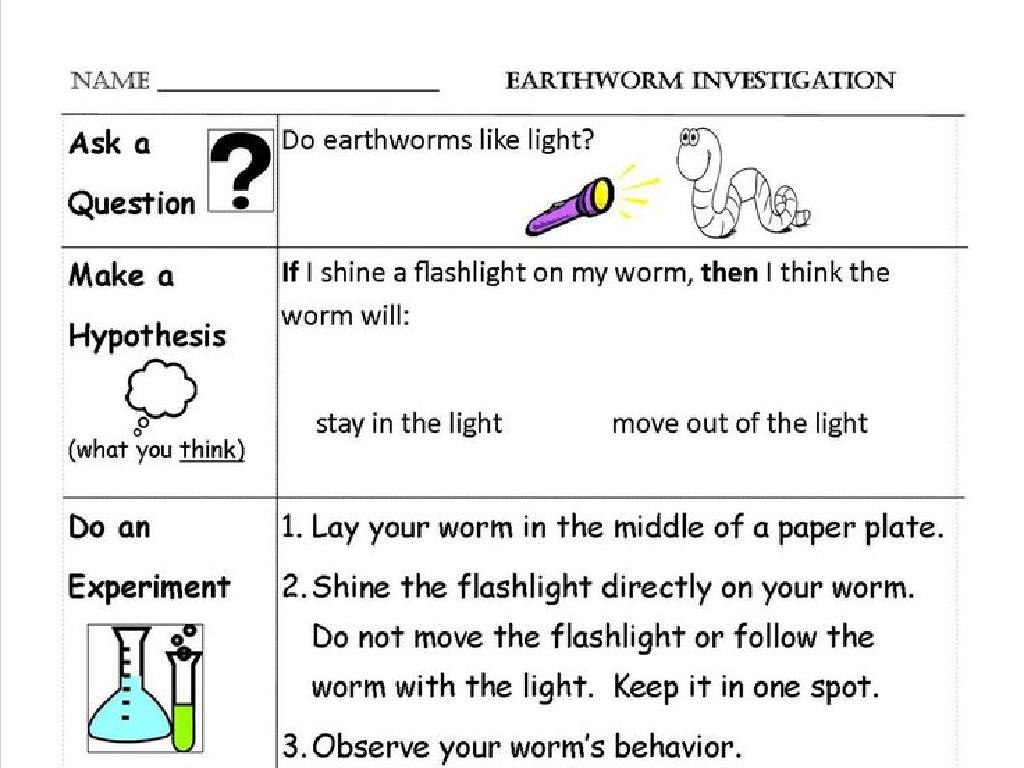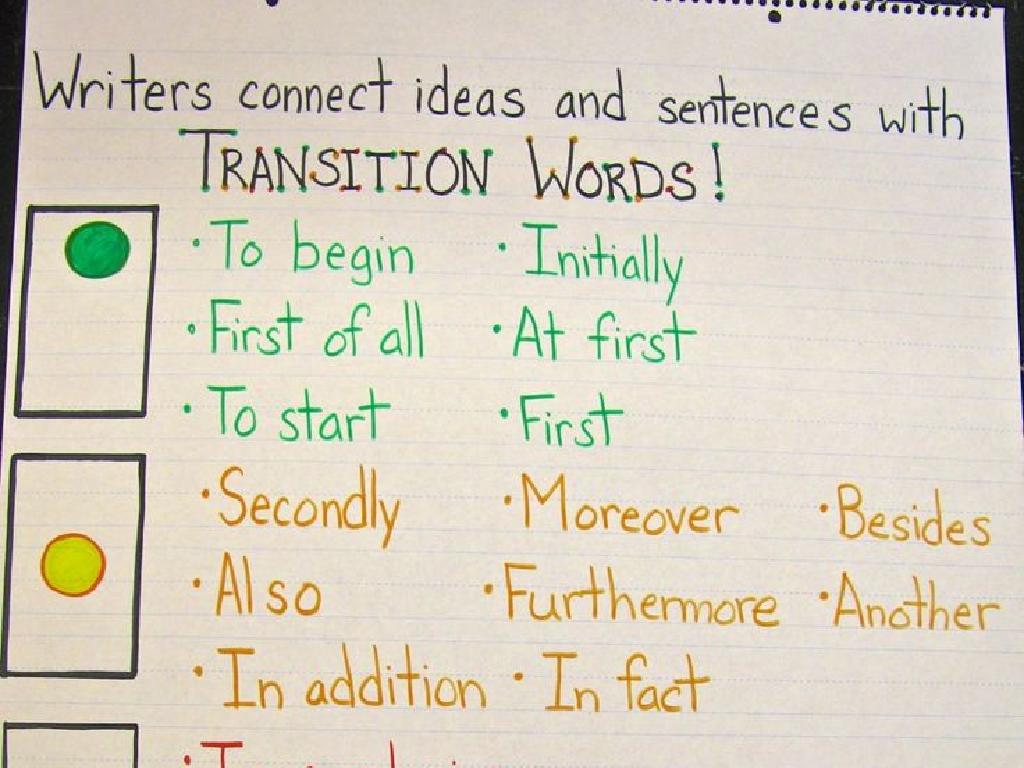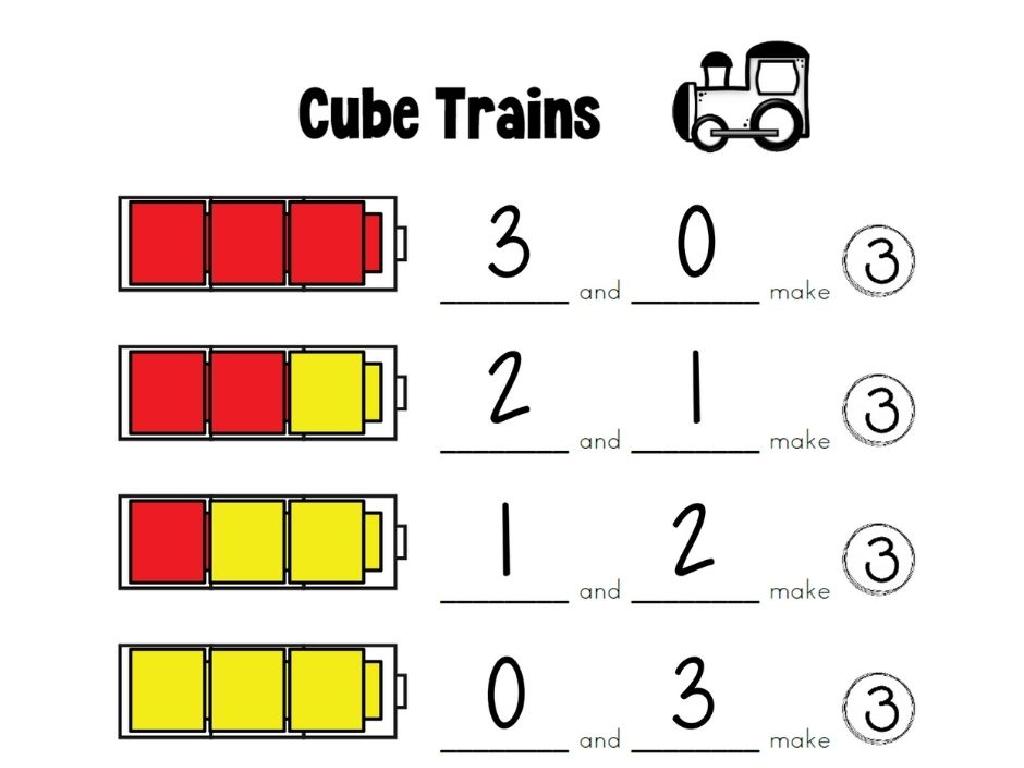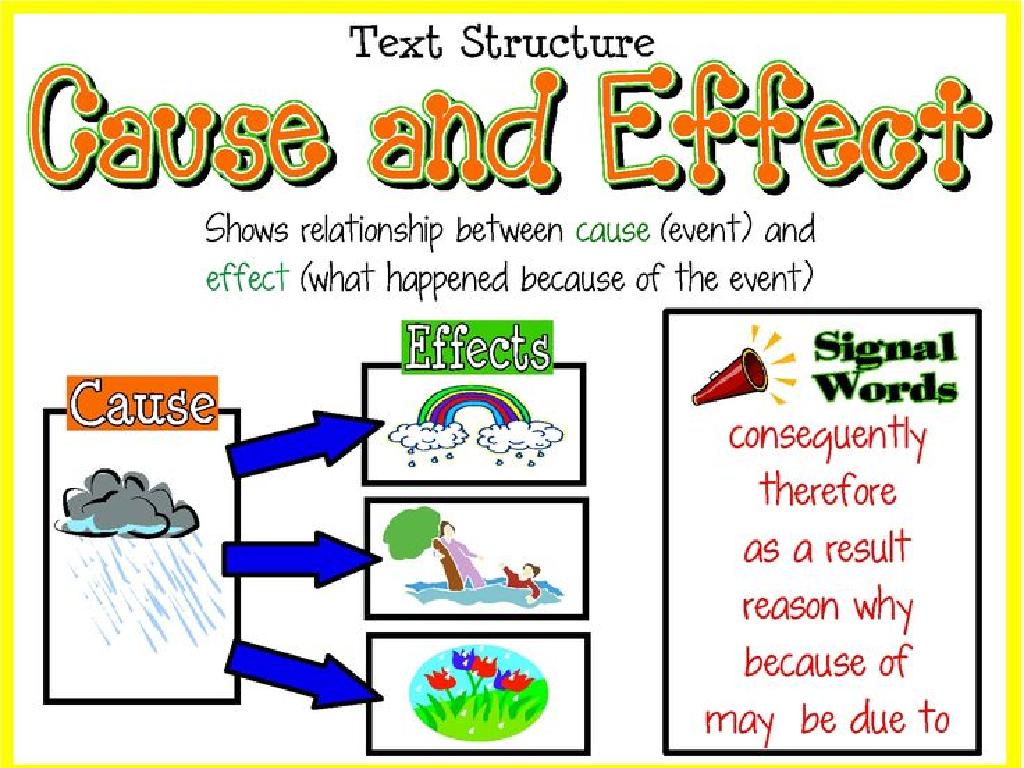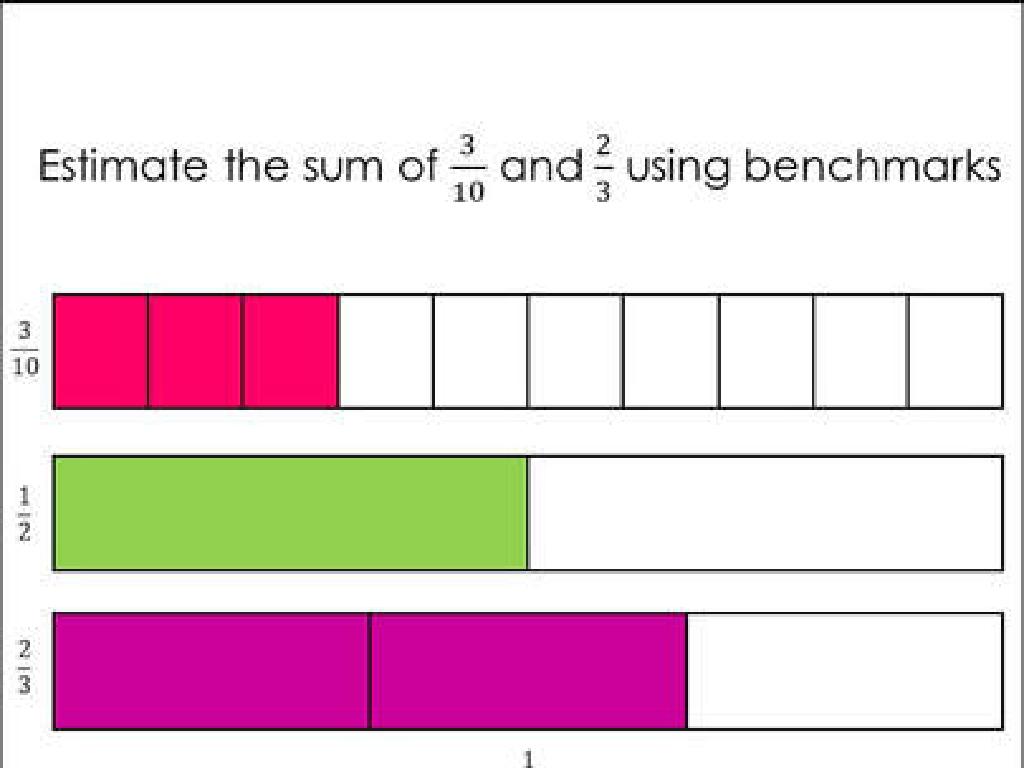Word Pattern Sentences
Subject: Language arts
Grade: Fifth grade
Topic: Prefixes And Suffixes
Please LOG IN to download the presentation. Access is available to registered users only.
View More Content
Exploring Prefixes and Suffixes
– Building blocks of words
– Define prefixes and suffixes
– Prefixes come before the root word, suffixes after
– How they alter word meaning
– ‘Unhappy’ vs ‘Happy’, ‘un-‘ means not
– Examples in sentences
– ‘Careful’ vs ‘Care’, ‘-ful’ means full of
|
This slide introduces the concept of prefixes and suffixes to students, explaining their role as the building blocks that modify the meanings of words. Prefixes are added to the beginning of a word to change its meaning, while suffixes are added to the end. For example, adding ‘un-‘ to ‘happy’ changes the meaning to not happy, and adding ‘-ful’ to ‘care’ changes it to mean full of care. Encourage students to think of other examples and how the addition of these word parts can change the meaning of the base word. This understanding is crucial for vocabulary development and word comprehension.
Exploring Prefixes in Word Patterns
– Define a prefix
– A prefix is a set of letters at the start of a word.
– Common prefix examples
– Examples include ‘un-‘, ‘re-‘, ‘pre-‘, ‘mis-‘.
– Prefixes alter word meanings
– ‘Unhappy’ shows ‘un-‘ changes meaning of ‘happy’.
– Practice with prefixes
– Find prefixes in words and discuss their effects.
|
This slide introduces the concept of prefixes to the students. Begin by defining a prefix as a group of letters placed before the base word to alter its meaning. Provide common examples of prefixes such as ‘un-‘, ‘re-‘, ‘pre-‘, and ‘mis-‘ and show how they change the meanings of words they precede; for instance, ‘happy’ becomes ‘unhappy’, which is the opposite of happy. Encourage students to think of other words with these prefixes and discuss how the meaning changes. As an activity, students can work in pairs to find words with prefixes in their reading books or come up with a list of words they know that use the prefixes discussed.
Understanding Suffixes
– Definition of a suffix
– A suffix is a letter group added to a word end
– Common suffix examples
– Examples: ‘-ful’ in ‘hopeful’, ‘-less’ in ‘fearless’
– Suffixes alter word class
– ‘Joy’ becomes ‘joyful’ (noun to adjective)
– Practice with suffixes
|
This slide introduces the concept of suffixes to students, explaining that they are groups of letters placed at the end of words to alter their meaning or function. Provide examples of common suffixes and how they can change a word’s part of speech, such as turning a noun into an adjective. Encourage students to think of words they know and discuss how adding different suffixes can change their meanings. For practice, students can work with a list of base words and experiment by adding different suffixes to see how the meaning changes. This activity will help solidify their understanding of the role suffixes play in word formation.
Creating New Words with Prefixes and Suffixes
– Prefixes and suffixes change meanings
– Example: ‘dis-‘ + ‘appear’ = ‘disappear’
– ‘dis-‘ means not or opposite of, making ‘disappear’ mean not appear
– Your turn: Add ‘-ness’ to ‘kind’
– What new word do you get with ‘kind’ + ‘-ness’?
– Share your new words and meanings
– Discuss how the meaning changes with the class
|
This slide introduces the concept of prefixes and suffixes to students, showing them how adding these to base words can alter their meanings. Start by explaining that prefixes are added to the beginning of words and suffixes to the end. Use ‘disappear’ as an example to illustrate how ‘dis-‘ changes the meaning of ‘appear’ to its opposite. Then, engage the students with an interactive activity where they add ‘-ness’ to ‘kind’ to form a new word. Encourage them to think about how the meaning of ‘kind’ changes once ‘-ness’ is added. Have students share their new words and discuss the new meanings as a class. This will help them understand the concept of word formation and the impact of prefixes and suffixes on word meaning.
Exploring Word Patterns: Prefixes and Suffixes
– Understanding word patterns
– Prefixes and suffixes modify meaning
– Prefix ‘re-‘ means ‘again’, suffix ‘-ful’ means ‘full of’
– Example: ‘The reusable bag is very useful.’
– ‘Reusable’ means able to be used again, ‘useful’ means full of use
– ‘re-‘ and ‘-ful’ as meaning clues
|
This slide aims to help students recognize how prefixes and suffixes alter the meanings of words. By examining word patterns, students can deduce the meaning of unfamiliar words in their reading. Use the example sentence to show how ‘re-‘ implies repetition or again, as in ‘reusable’, meaning something that can be used more than once. Similarly, ‘-ful’ suggests a fullness or abundance of a quality, as in ‘useful’, meaning something that has a lot of use or is very helpful. Encourage students to think of other examples with these prefixes and suffixes to solidify their understanding.
Practice Time: Crafting Sentences with Prefixes and Suffixes
– Create sentences with prefixes
– Prefixes are added to the beginning of a word to change its meaning, like ‘unhappy’.
– Write sentences using suffixes
– Suffixes are added to the end of a word to change its form, such as ‘happiness’.
– Partner up for sentence creation
– Share your sentences with the class
|
This activity is designed to reinforce the students’ understanding of prefixes and suffixes and how they alter the meanings of words. Encourage students to think creatively and come up with original sentences. They should work in pairs to promote collaboration and discussion about word choices. Provide examples of prefixes and suffixes they can use, and remind them to consider the context of their sentences to ensure the words are used correctly. After writing, create a supportive environment for students to share their sentences, fostering public speaking skills and peer learning.
Class Activity: Word Builder Challenge
– Form groups for word building
– Combine cards to create words
– Use prefix, base word, and suffix cards
– Write sentences with new words
– How do the new words fit in a sentence?
– Share and discuss word meanings
– How does adding prefixes or suffixes alter the word?
|
This activity is designed to help students understand how prefixes and suffixes change the meanings of base words. Divide the class into small groups and provide each group with a set of cards containing prefixes, base words, and suffixes. Students will combine these cards to form new words. Then, they will write sentences using their newly created words, which will help them see how the meaning of the base word is modified by prefixes and suffixes. After the activity, each group will share their sentences and discuss the new meanings. For the teacher: Prepare sets of cards with a variety of prefixes, base words, and suffixes. Monitor the groups to ensure that all students are participating and offer guidance as needed. Possible variations of the activity could include challenging students to create the longest word, or a word that would score the most points in a game like Scrabble.
Wrapping Up: Prefixes and Suffixes
– Congrats on learning prefixes and suffixes!
– Homework: Find 10 words in your book
– 5 words with prefixes, 5 with suffixes
– Write sentences with each word
– Create meaningful sentences
– Show understanding of each word
– Use the words in a way that reflects their meanings
|
Students have done a great job learning about prefixes and suffixes today. For homework, they are tasked to find a total of ten words from their reading book – five that begin with prefixes and five that end with suffixes. They should write sentences using each of these words to demonstrate their understanding of the words’ meanings. This exercise will help reinforce their knowledge of how prefixes and suffixes change the meanings of root words. Encourage creativity and proper usage in their sentences. In the next class, ask some students to share their sentences to promote discussion and deeper understanding.

